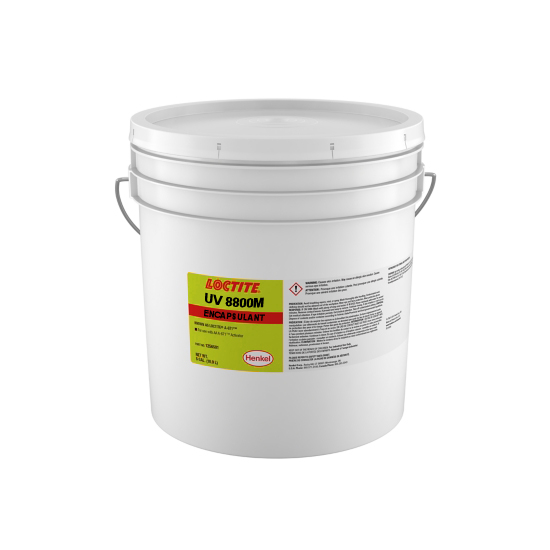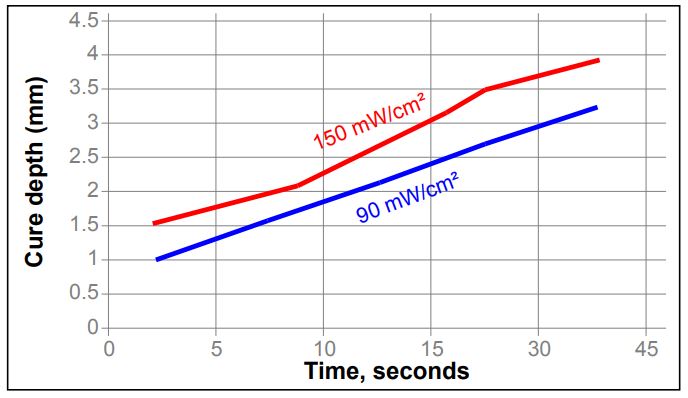LOCTITE ECCOBOND UV8800M
- UV Cure
- Cures rapidly
- Excellent adhesion
Product Description
LOCTITE UV8800M epoxy encapsulant is developed to meet high temperature thermal cycling specifications. It UV cures to form a hard translucent coating when exposed to UV light of sufficient intensity. The curing of the product is not inhibited by oxygen, resulting in excellent surface cure.
LOCTITE UV8800M exhibits viscosity characteristics and dearated condition that make it suitable for accurate dispensing with excellent shape control. This encapsulant is typically used for CSP and BGA packages and is, among others, used on Glass, Epoxy, Polyimide and Polyester substrates.
UV Cure Condition
Medium pressure mercury lamp:
- Light Dose, mW/cm² 100
- Exposure Time, seconds 2
- UV radiation, , nm (UVA) 315 to 400
Technical Specifications
| General Properties | |||||||
| |||||||
| Specific Gravity Specific Gravity Specific gravity (SG) is the ratio of the density of a substance to the density of a reference substance; equivalently, it is the ratio of the mass of a substance to the mass of a reference substance for the same given volume. For liquids, the reference substance is almost always water (1), while for gases, it is air (1.18) at room temperature. Specific gravity is unitless. | 1.6 | ||||||
| Physical Properties | |||||||
| Viscosity Viscosity Viscosity is a measurement of a fluid’s resistance to flow. Viscosity is commonly measured in centiPoise (cP). One cP is defined as the viscosity of water and all other viscosities are derived from this base. MPa is another common unit with a 1:1 conversion to cP. A product like honey would have a much higher viscosity -around 10,000 cPs- compared to water. As a result, honey would flow much slower out of a tipped glass than water would. The viscosity of a material can be decreased with an increase in temperature in order to better suit an application | 3,000 mPa.s | ||||||
| Chemical Properties | |||||||
| |||||||
| Thermal Properties | |||||||
| |||||||
| Glass Transition Temperature (Tg) Glass Transition Temperature (Tg) The glass transition temperature for organic adhesives is a temperature region where the polymers change from glassy and brittle to soft and rubbery. Increasing the temperature further continues the softening process as the viscosity drops too. Temperatures between the glass transition temperature and below the decomposition point of the adhesive are the best region for bonding. The glass-transition temperature Tg of a material characterizes the range of temperatures over which this glass transition occurs. | 29 °C | ||||||
Additional Information
LOCTITE UV8800M can be cured by irradiation with ultraviolet and visible light as well as LED-UV light with single wavelength distribution of sufficient intensity. Cure rate and depth of cure depend on the intensity, spectral distribution of the light source, exposure time and light transmittance of the substrate through which the light must pass.




